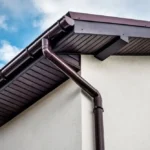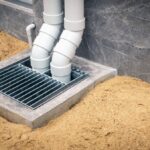
Introduction
Keeping your roof in good condition is a crucial aspect of maintaining your home. Damaged or loose shingles can lead to leaks, water damage, and increased energy bills. As a homeowner, understanding how to repair loose shingles can save you time and money.
This comprehensive guide will help you navigate through the process, offering practical tips and ensuring that your home remains safe and well-protected.
Understanding Roof Shingles
Roof shingles are a fundamental component of your roofing system. They come in various materials such as asphalt, wood, metal, and slate. Each type has different characteristics, but they all serve the same purpose – to protect your home from the elements.
Importance of Shingles
Shingles act as the first line of defense against weather conditions. Whether it’s the hot sun, heavy rain, or strong winds, it’s essential that your shingles are securely attached to your roof.
Causes of Loose Shingles
Understanding the causes of loose shingles is the first step in preventing and repairing them. Common causes include:
- Weather Conditions: Strong winds and heavy thunderstorms can dislodge shingles.
- Natural Wear and Tear: Over time, shingles can deteriorate due to aging and weather exposure.
- Poor Installation: Improper installation can lead to shingles that are not securely fastened.
Signs of Loose Shingles
It’s crucial to regularly inspect your roof for signs of loose shingles. Some indicators include:
- Missing shingles or granules in the gutters.
- Visible cracks or tears in the shingles.
- Leaks or water stains inside your home.
Regular inspections can help you catch issues early and avoid more extensive damage. To learn more about roof inspections, check out this resource.
Tools and Materials Needed
Before starting any repair work, gather the following tools and materials:
- Hammer and roofing nails
- Pry bar or flat tool
- Roofing cement
- Replacement shingles (if necessary)
- Protective gloves and safety goggles
Safety Precautions
Safety should always be a priority when working on your roof. Here are some precautions to keep in mind:
- Use a sturdy ladder and ensure it’s placed on a stable surface.
- Wear non-slip shoes to maintain a good grip while on the roof.
- Consider using a safety harness.
For additional tips on working safely on your roof, check out the National Roofing Contractors Association’s guidelines here.
Step-by-Step Guide on How to Repair Loose Shingles
Step 1: Locate the Loose Shingles
Begin by carefully climbing onto your roof and identifying the loose shingles. Use a visual inspection to find shingles that are raised or appear to be out of place.
Step 2: Remove the Loose Shingles
Gently lift the damaged shingles using a pry bar. Be careful not to damage the surrounding shingles during this process.
Step 3: Apply Roofing Cement
Once you’ve removed the loose shingles, apply a generous amount of roofing cement to the surface beneath the shingle location. This adhesive will secure the new or repositioned shingle in place.
Step 4: Secure the Shingle
Place the replaced or repositioned shingle over the roofing cement. Use roofing nails to secure the shingle, ensuring the nails are placed at least an inch from each edge to avoid cracking.
Step 5: Final Inspection and Clean-up
After completing the repair, double-check that all shingles are secure and lying flat. Clean up all tools and debris, ensuring your rooftop is cleared for safety.
Preventative Maintenance Tips
Preventing loose shingles involves regular maintenance and prompt repairs. Here are some tips:
- Inspect your roof twice a year and after major storms.
- Trim overhanging branches to prevent wind damage from trees.
- Ensure gutters are clean to prevent water buildup.
For more detailed maintenance advice, visit this guide on winterizing your roof.
When to Call a Professional
While many homeowners can tackle minor repairs, complex roof issues require professional intervention. Contact a roofing expert if:
- The damage is extensive or covers a large area.
- You are unsure about the extent of the damage.
- You are uncomfortable working at heights.
Conclusion
Understanding how to repair loose shingles is an essential skill for homeowners. By keeping an eye out for early signs of damage and performing timely repairs, you can greatly extend the lifespan of your roof. However, dont hesitate to seek professional help if required. Your roof’s integrity is key to your home’s protection.

Frequently Asked Questions
What causes shingles to become loose?
Several factors can cause shingles to loosen including stormy weather, natural wear and tear, and improper installation.
Is it safe to repair shingles myself?
Yes, minor repairs can be conducted safely by homeowners. However, always follow safety precautions or consult a professional if unsure.
How often should I inspect my roof?
Regular inspections are recommended twice a year: once in the fall and once in the spring, as well as after any major storms. For more details on inspections, visit post-storm inspection tips.
This article contains affiliate links. We may earn a commission at no extra cost to you.







